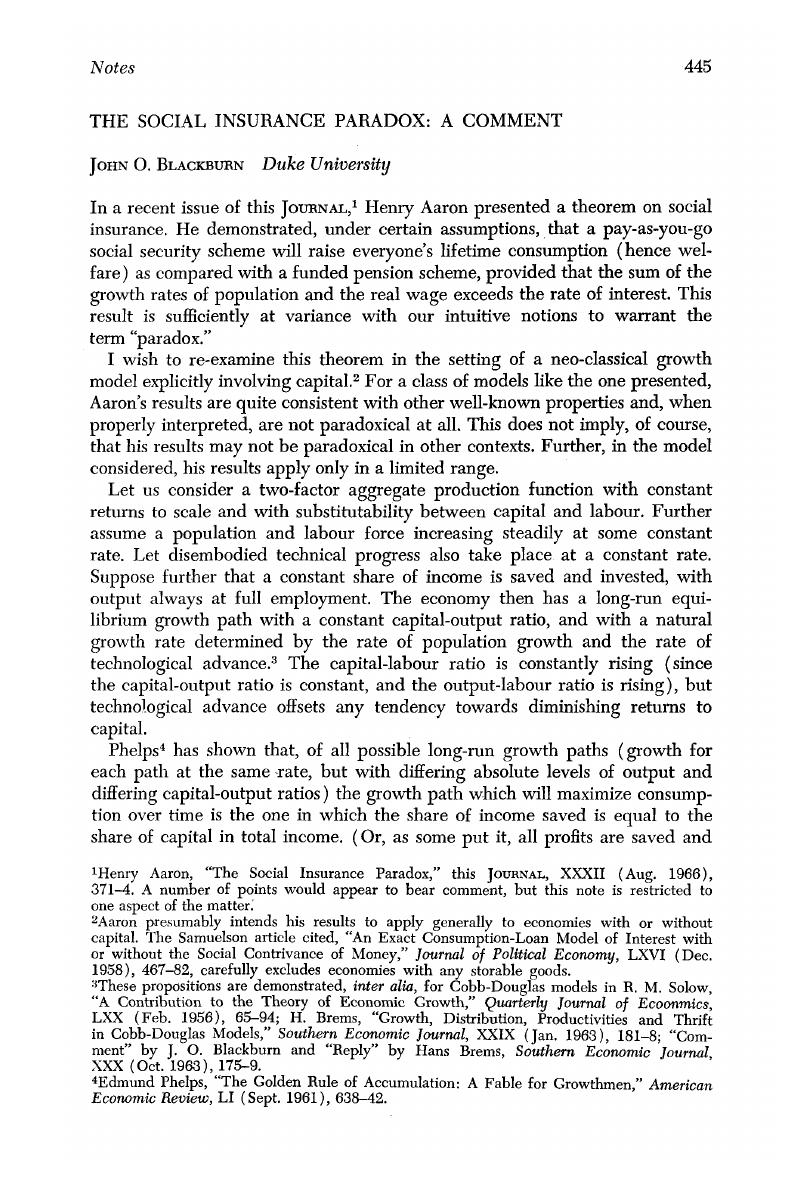No CrossRef data available.
Published online by Cambridge University Press: 07 November 2014

1 Aaron, Henry, “The Social Insurance Paradox,” this Journal, XXXII (08 1966), 371–4.Google Scholar A number of points would appear to bear comment, but this note is restricted to one aspect of the matter.
2 Aaron presumably intends his results to apply generally to economies with or without capital. The Samuelson article cited, “An Exact Consumption-Loan Model of Interest with or without the Social Contrivance of Money,” Journal of Political Economy, LXVI (12 1958), 467–82Google Scholar, carefully excludes economies with any storable goods.
3 These propositions are demonstrated, inter alia, for Cobb-Douglas models in Solow, R. M., “A Contribution to the Theory of Economic Growth,” Quarterly Journal of Ecoonmics, LXX (02 1956), 65–94 CrossRefGoogle Scholar; Brems, H., “Growth, Distribution, Productivities and Thrift in Cobb-Douglas Models,” Southern Economic Journal, XXIX (01 1963), 181–8CrossRefGoogle Scholar; “Comment” by J. O. Blackburn and “Reply” by Brems, Hans, Southern Economic Journal XXX (10 1963), 175–9.Google Scholar
4 Phelps, Edmund, “The Golden Rule of Accumulation: A Fable for Growthmen,” American Economic Review, LI (09 1961), 638–42.Google Scholar
5 Aaron does not distinguish between labour and other incomes since he does not explicitly introduce capital and related profit or interest income. In fact, the status of “interest” as discussed by Aaron is unclear. Since we are dealing with a model in which property income exists, we must take it into account as being consumed or saved. Recipients of property income may also receive labour income; in any event, they must give some thought to their retirement years. The treatment most nearly approaching Aaron's seems to be that of dealing with real output (income) per person or per worker, analogous to his real wage (or real output per worker) in an economy in which only one factor (labour) is explicitly considered.